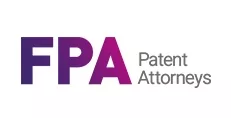The impact of patents on access to pharmaceuticals in developing countries is a hot topic in Australia, the US and many other countries. The concern is that most developing countries do not have the infrastructure required for timely pharmaceutical manufacture and that in developed countries where this infrastructure is available, patents restrict the export and supply of pharmaceuticals to those countries that need them. The WTO recognised this concern in September 2003 with its ' Implementation of paragraph 6 of the Doha Declaration on the TRIPS Agreement and public health' and the Australian Government has now issued draft legislation based on the text of this treaty.
In summary, the Exposure Draft of Intellectual Property Laws Amendment Bill 2012 provides a new regime for the issue of a compulsory licence for manufacture and export of pharmaceuticals in limited conditions. As set out in the Exposure Draft of Intellectual Property Laws Amendment Bill 2012 Explanatory Memorandum the following process should apply:
- Identify the relevant patents - the importing country and the Australian generic manufacturer identify that the required product is patented in Australia.
- Attempt to obtain authorisation - the generic manufacturer makes reasonable attempts to obtain authorisation from the innovator company to manufacture and export the product. This step may be omitted if the public health problem amounts to a national emergency, or other circumstance of extreme urgency, in the importing country.
- Notify intent to use the system - if the generic company is unsuccessful in obtaining the innovator company's authorisation within 30 days of seeking it, or circumstances of national emergency or extreme urgency apply in the importing country, the importing country notifies its intent to use the Protocol system and other details. WTO members must notify the TRIPS Council. Countries that are not WTO members must notify the Commissioner of Patents.
- Apply to the Federal Court for a compulsory licence - the generic manufacturer applies to the Federal Court for a compulsory licence of the patent. The Court hears the application, using an expedited process in urgent cases.
- Notify grant of the licence - if the Federal Court grants the licence, the licensee must notify the Commissioner of Patents of the licence and of the address of the website where shipment information is to be posted (see no. 7 below). The Commissioner then provides this information to the TRIPS Council.
- Manufacture and export of the patented pharmaceutical - the generic manufacturer manufactures and exports the patented pharmaceutical in accordance with the terms of the licence.
- Notify details of shipment - before sending the pharmaceutical to the importing country, the generic manufacturer posts the quantities, destinations, labelling and markings of the product on the website identified above.
- Determine remuneration - the licensee and the innovator company can negotiate the remuneration due to the innovator company for the license. If they cannot agree, the Federal Court can determine the remuneration. This can be done when the court considers the application for the licence, or on a separate application later on.
Submissions in relation to the exposure draft may be lodged until 1 October 2012.
The content of this article is intended to provide a general guide to the subject matter. Specialist advice should be sought about your specific circumstances.

